Ortlieb’s bikepacking bag system: what I used for cycling through the High Atlas mountains
Here’s a run down on the bags and kit I used on a 360km gravel loop through Morocco’s High Atlas mountains
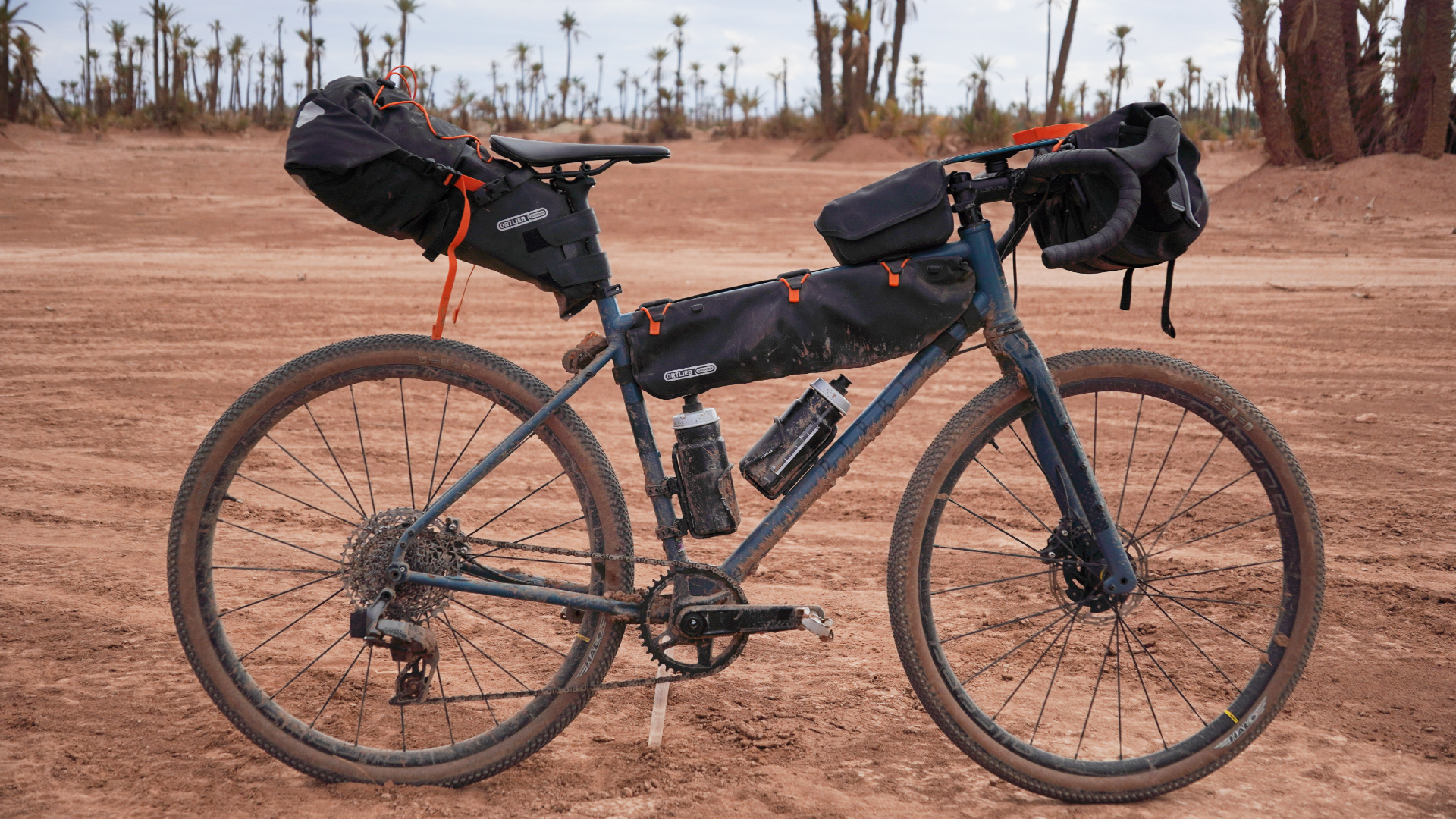
At the tail end of February, I set out from the city of Marrakesh, Morocco on a 360km gravel loop across the Atlas mountains to the ancient - and stunning - fortified town of Aït Benhaddou.
I could go on for hours about the ride through the unrelenting sun down on the plains, the sleet and the snow of the mountain passes and how I ended up vomiting twice at an elevation of 2,500m on a remote gravel pass only accessible by a 10km hiking trail on one side and a 30km dirt road on the other - if you’re interested in that, you can find the full write up of our ride through Morocco's High Atlas Mountains over here.
We also hunted out the most tech heavy bikes ahead of the start of the Atlas Mountain Race - you can check out that round up over here.
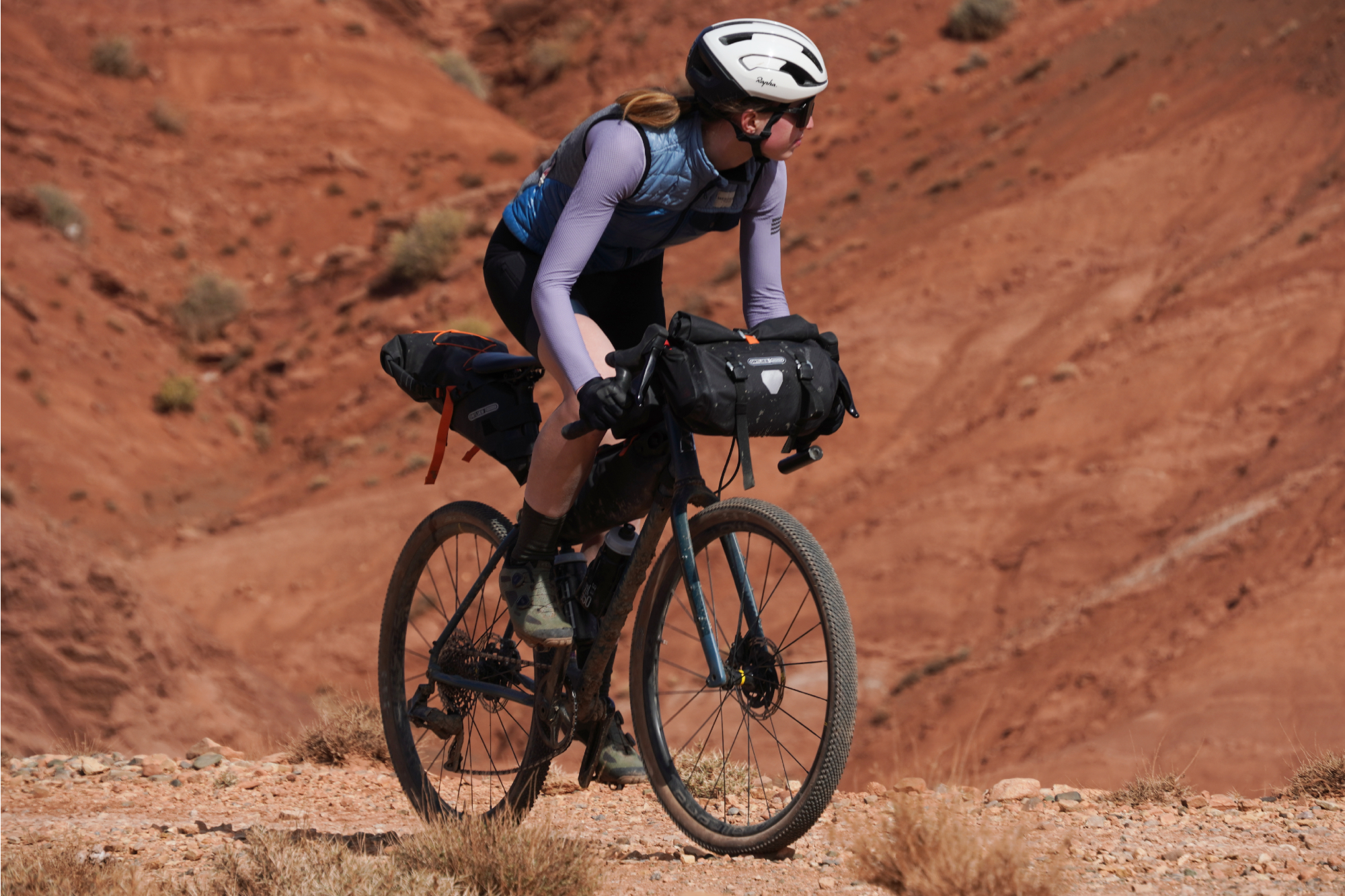
But here is where I’ll go into detail on the bags and the kit I used during the trip. Just to be clear, this isn’t a review of Ortlieb’s bikepacking bag system, but a description of how I used the products and a few of the key features that stood out. If you're interested in our reviews, those can be found in our best bikepacking bags buyer’s guide.
For this ride, I used four bags from Ortlieb’s range: the Ortlieb Handlebar-Pack QR, Ortlieb Seat-Pack, Ortlieb Frame-Pack RC Toptube and the Ortlieb Fuel Pack. Before getting into the details on each of them, I’ll just go over my experience of the waterproofing, as it’s the same for the whole range.
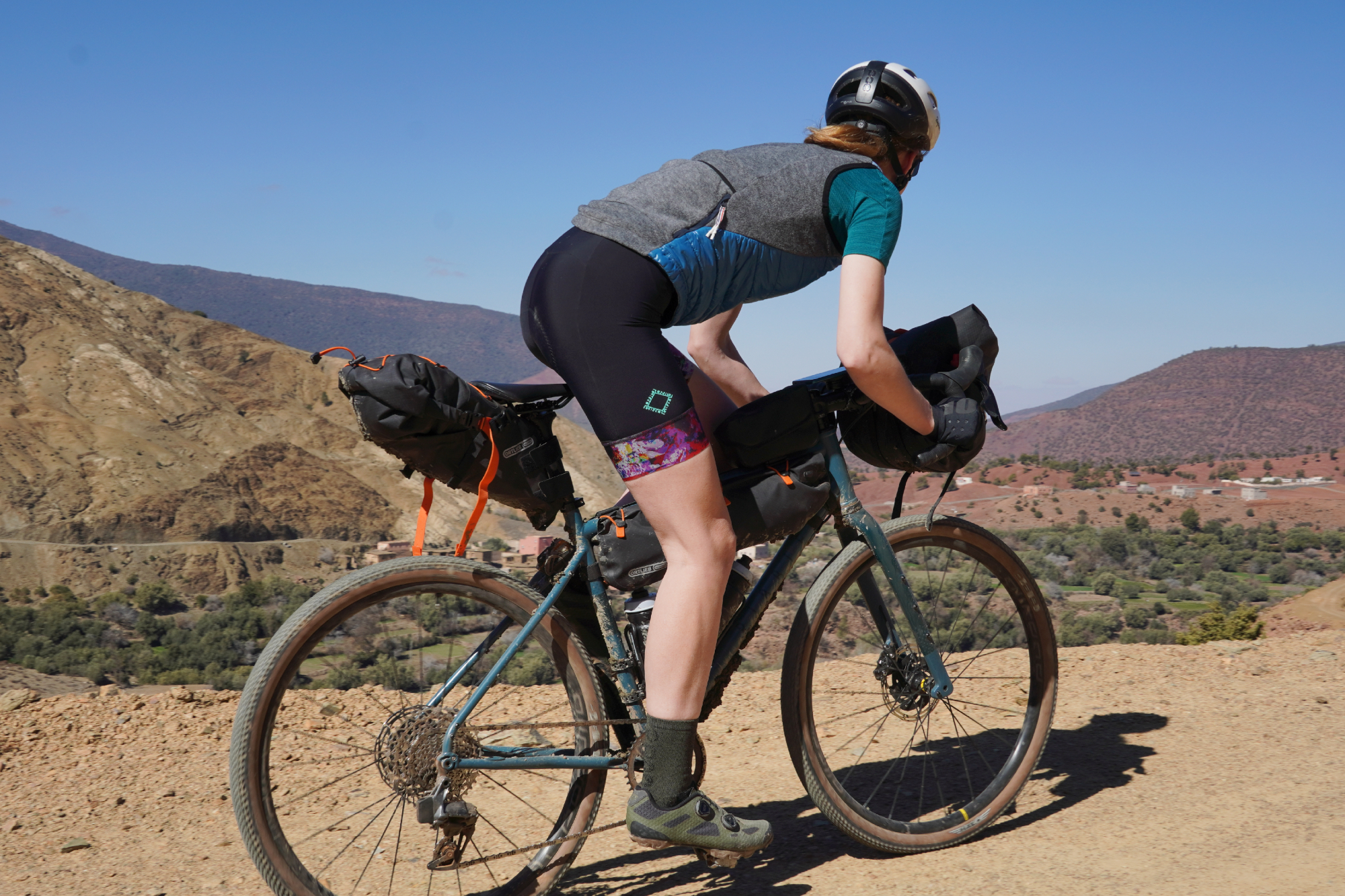
Although the temperature range spanned from the mid twenties Celsius to several degrees below zero (seventies to twenties Fahrenheit), the actual perception was much less varied. For the most part it was bone dry with blue skies - and when the clouds did close in, it was mainly snow and sleet rather than actual rain.
Of course, that was still quite wet once it melted, but it wasn’t really of an extent that would push the limits of any product’s waterproofing. Suffice to say, my kit did all remain dry, but it wasn’t presented that much of a challenge.
Ortlieb Handlebar-Pack QR
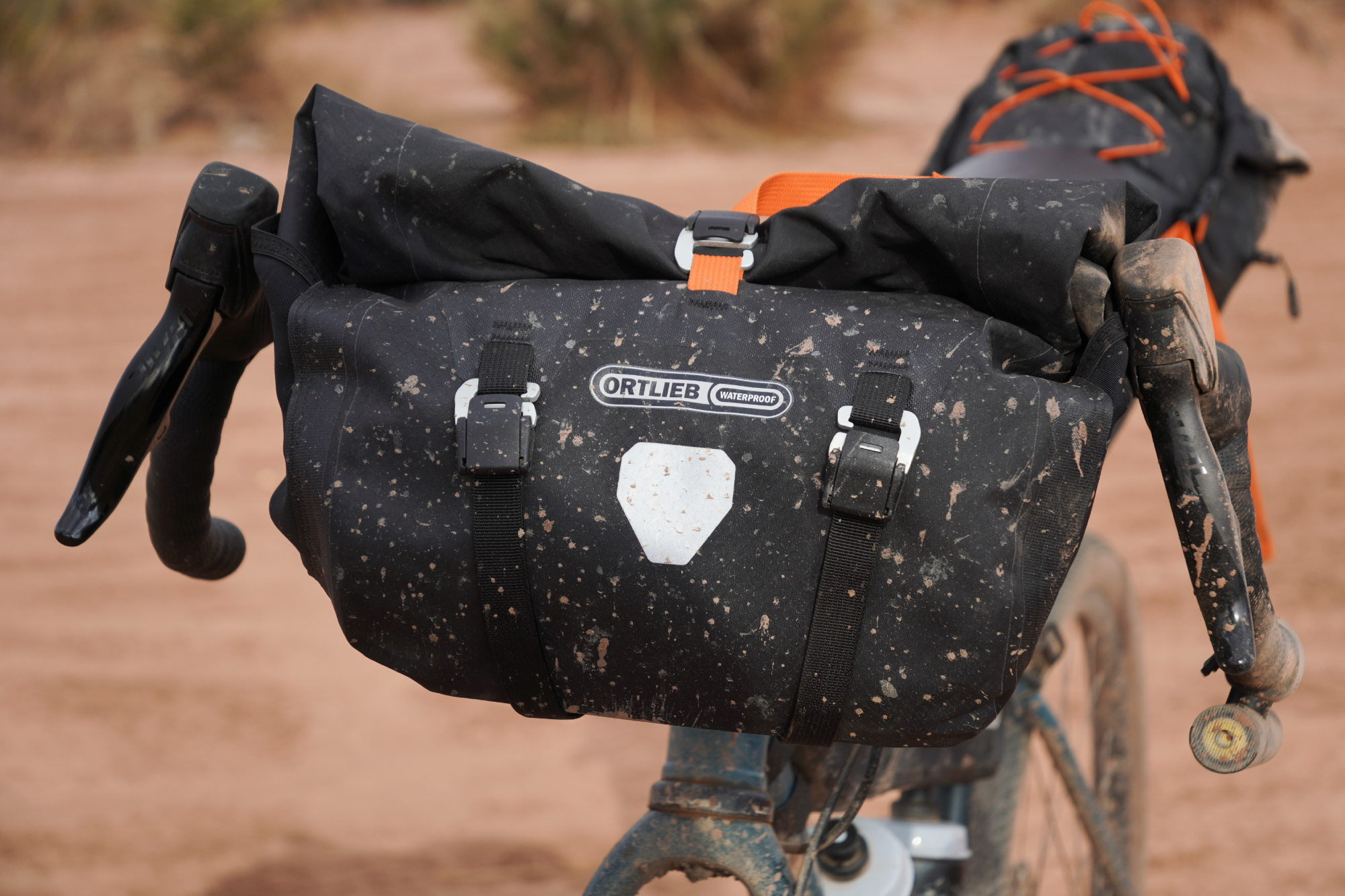
First, I’ll just run through the kit I was carrying in this bag before turning to a few of the details which I was most appreciative of on the ride.
For the most part, it was just food and water that I was stashing up front. The route as planned incorporated some pretty long stretches in some quite remote areas of the Atlas mountains, and so I wanted to make sure that I would definitely have all the nutrition I could possibly need.
Even with my heavy packing in that regard, thanks to the large 11l capacity I was still able to stash my insulated gilet in there, too. There were some quite large temperature changes throughout the days and with the longer descents, so keeping layers handy was a must. But at the same time, I did want a more secure place to keep them than just relying on bungees, as there were also some long, hot stints.
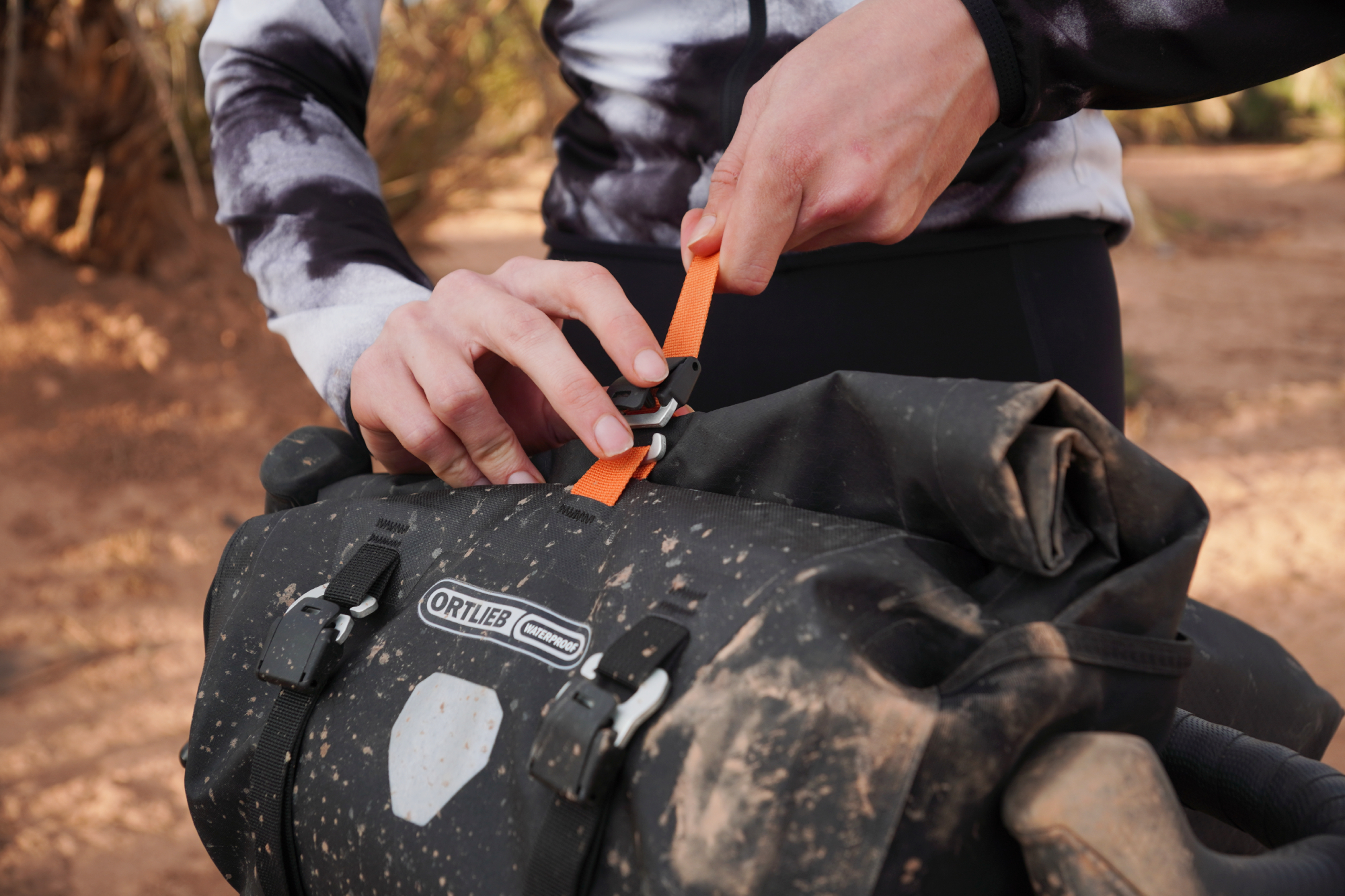
One of the key features of the Handlebar-Pack QR, as the name suggests, is that quick-release functionality. It is really fast to pop on and off the bike using the retention straps, but out on the ride I didn’t end up using that aspect of the bag - I tended to just use a carrier bag when picking up supplies and leaving the Handlebar-Pack on my bike (and still holding all my gear).
But for the initial mounting of the Handlebar-Pack and the post-adventure stripping down, it was very convenient! Just be aware that there is a bit of a learning curve to using the straps although it’s neat once you know how to use it.
More generally, the attachment system was great in how securely it held the bag in place and the way it played nicely with the gravel bike’s brake lines. Particularly useful was how it left ample room for a mounted smartphone for navigation.
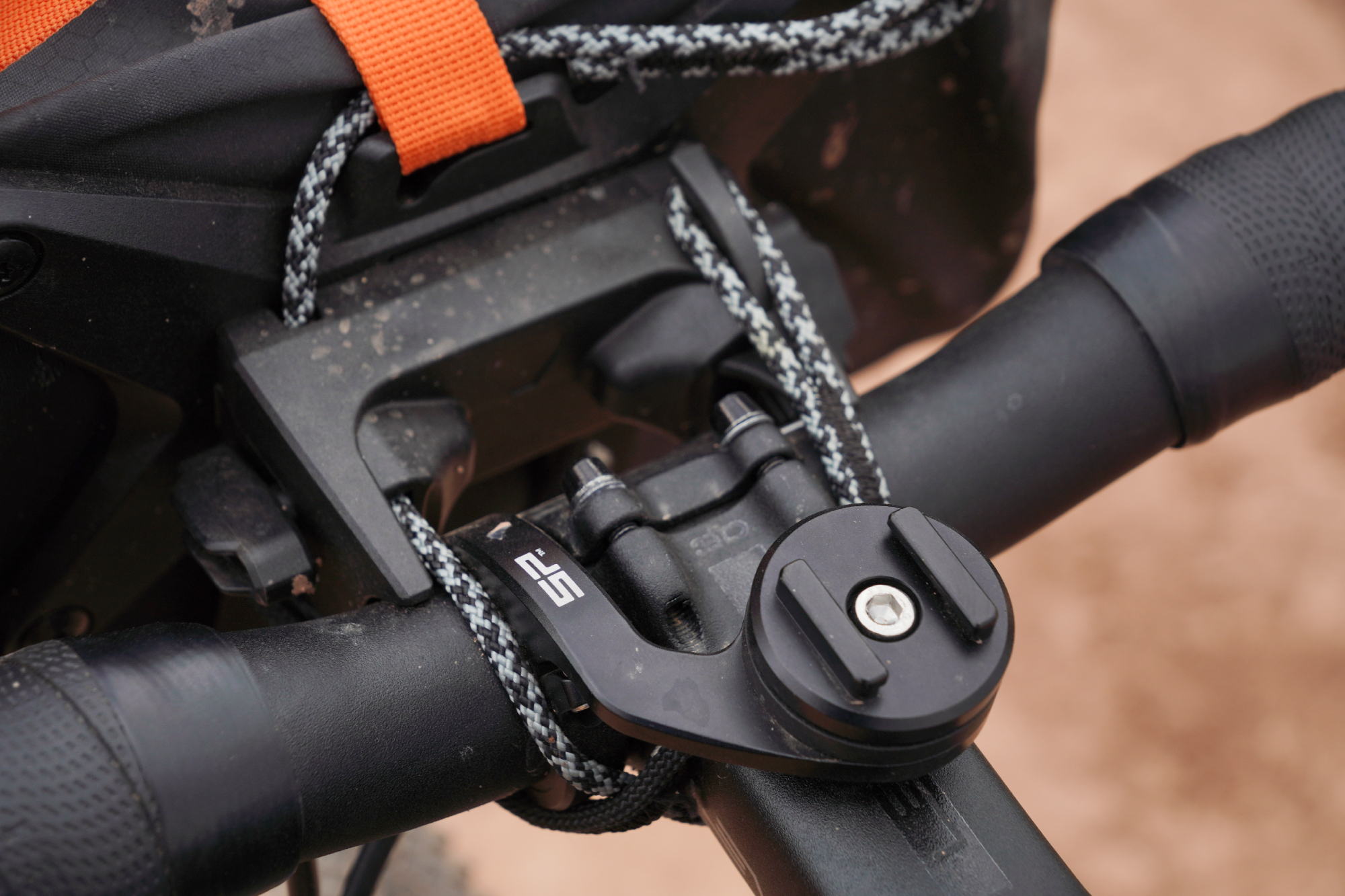
The stretchy mesh pockets on the sides of the bag were excellent for keeping used wrappers in until I could find somewhere to dispose of them properly. Impressively, the pockets could even accommodate a water bottle, but you would need incredibly wide handlebars to actually make use of that capability - either that, or simply flat bars.
Ortlieb Seat-Pack
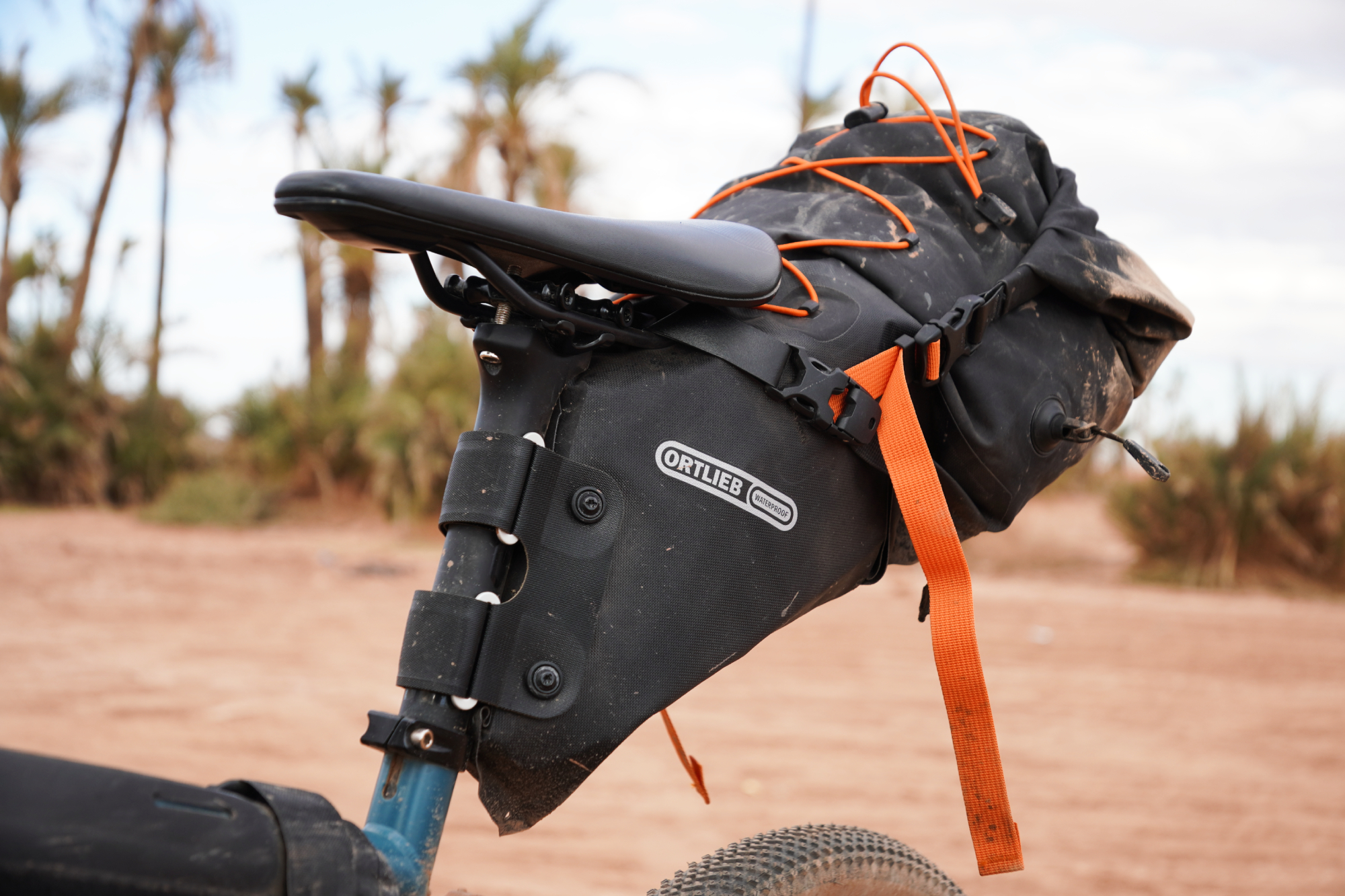
Out back, I was using the Ortlieb Seat-Pack exclusively for clothes. Although it is possible to wash one pair of shorts and a jersey every night for you to wear the next morning, I find that kit never really dries in time - and pulling on damp lycra before a cold, early morning start really isn’t so fun!
In addition to spare shorts and jerseys, with the huge swings in temperature (going from the mid 20s Celsius (mid 70s Fahrenheit) to hitting lows of -3°C / 26°F), I had a thick jacket and a range of warmers to help keep me toasty.
It didn’t end up filling the Seat-Pack’s 16.5l volume to its limit, but you can always roll a roll-top down further - you can’t squeeze in more space where there isn’t! So I was very happy with the setup.
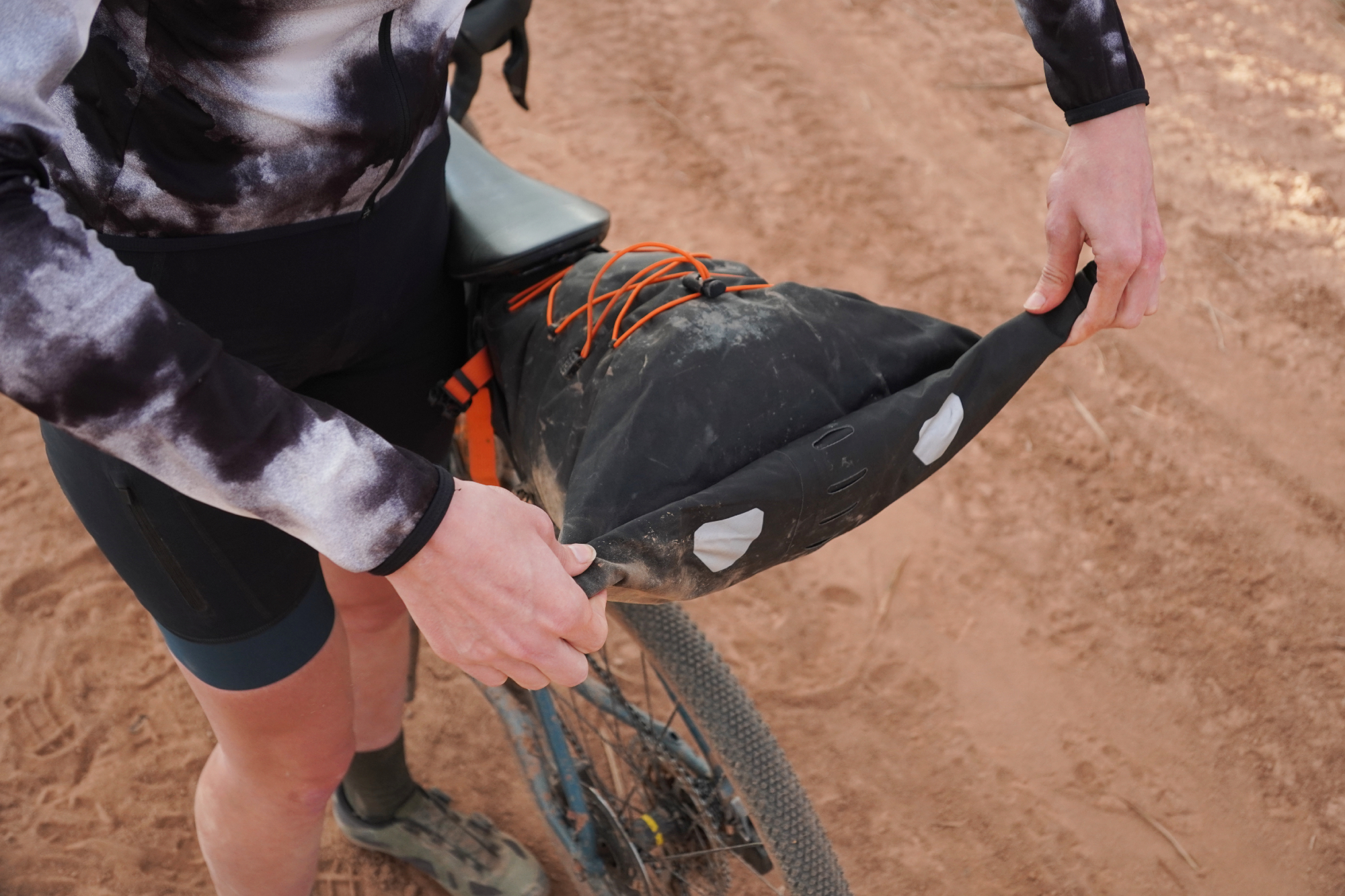
I particularly liked the air valve on the side of the Seat-Pack. Squeezing all the air out of a roll top bag as you pack it down can be something of a dark art - particularly when the said bag is attached to the saddle by the rails. But with this system I could just pull on the valve, roll everything up tight, and pop it back in again - brilliant.
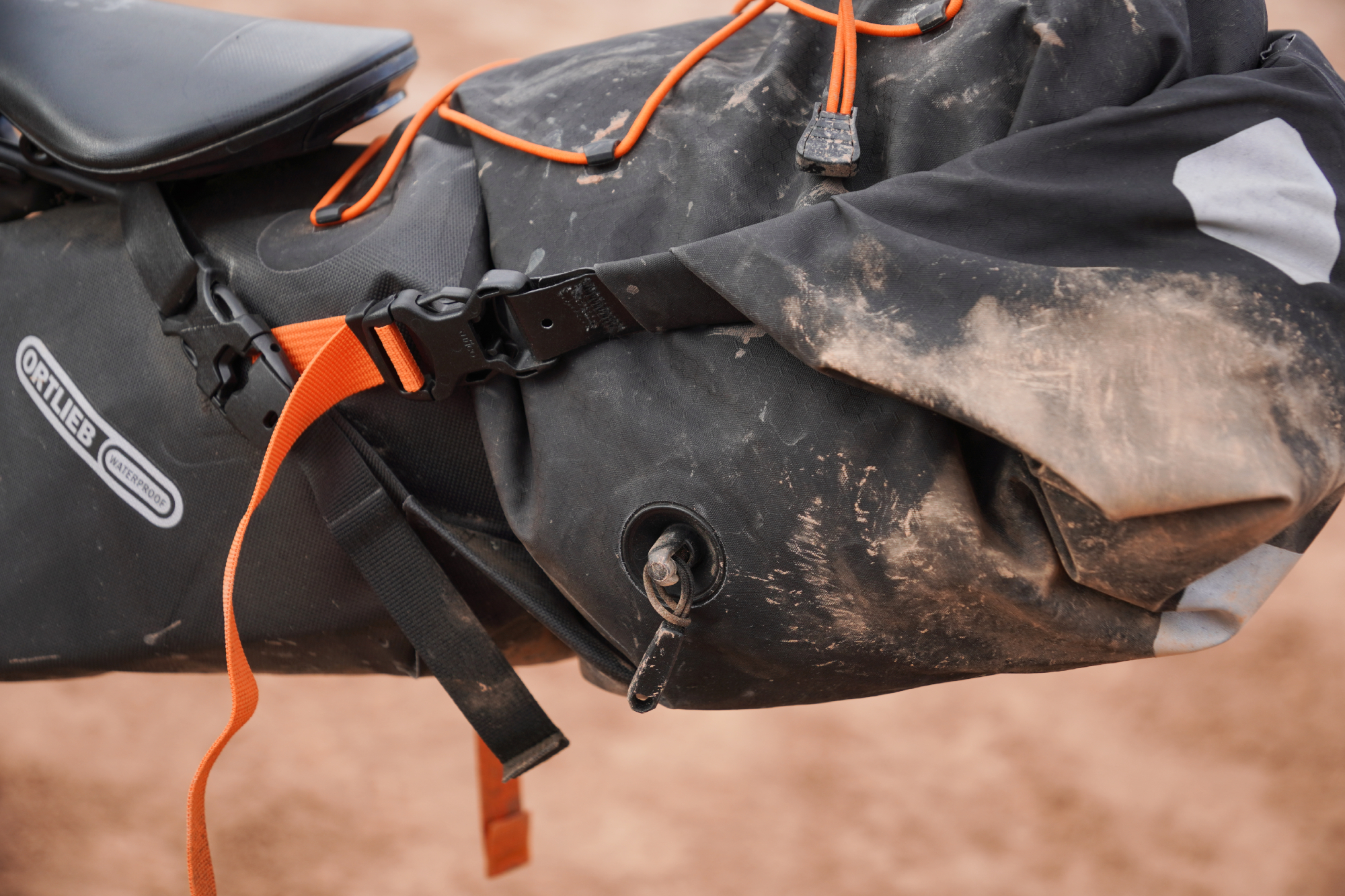
Finally, bungee straps are always a useful feature - and are especially so on a saddle pack. I didn’t have any set items which I would always strap in, it would just be whatever was most convenient at the time.
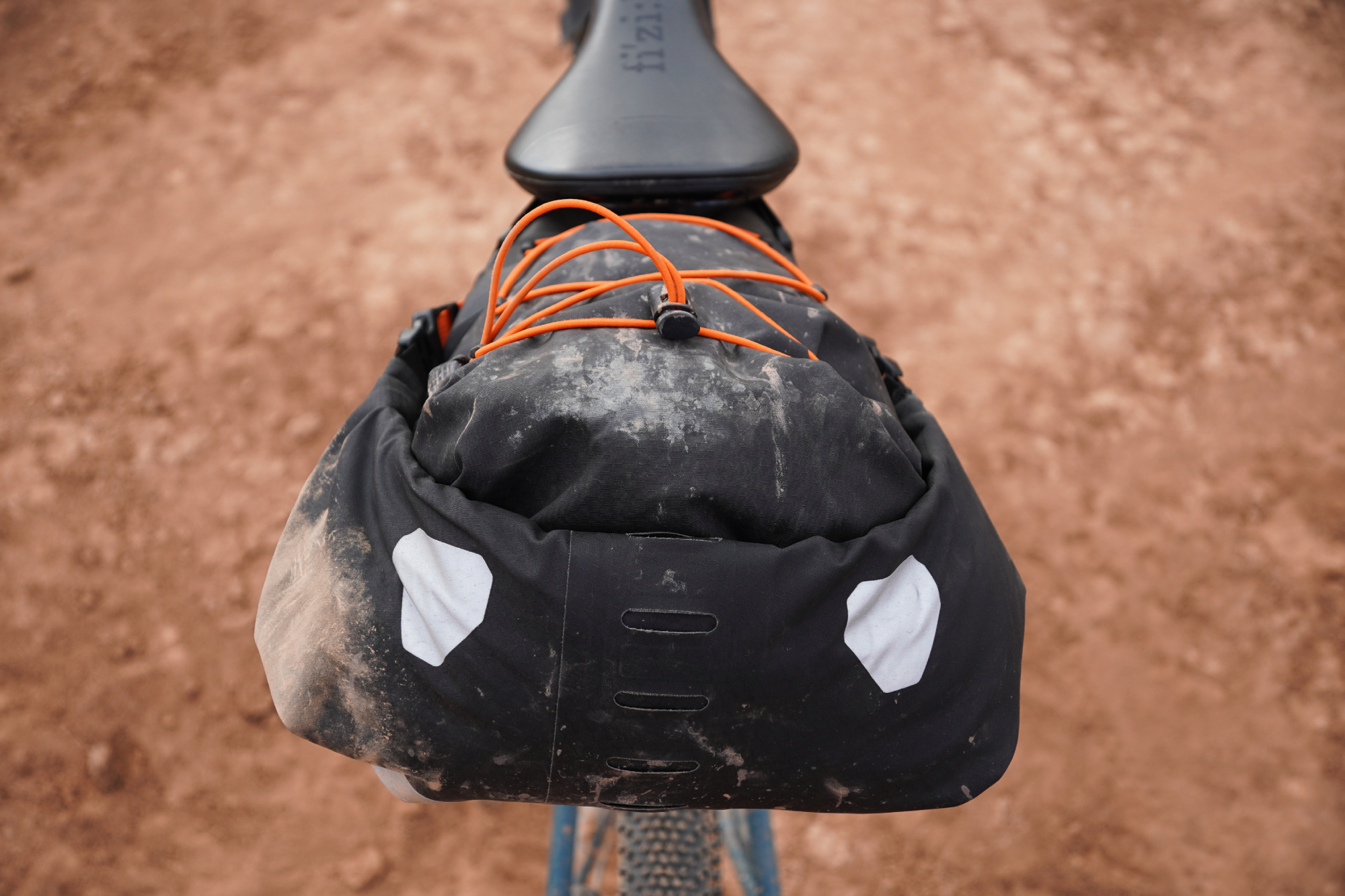
Occasionally, that was my outer layer, sometimes it would be a bag of brioche, once it was an extra litre and a half of water - but that was quite heavy and I wouldn’t advise it!
Ortlieb Frame-Pack RC Toptube
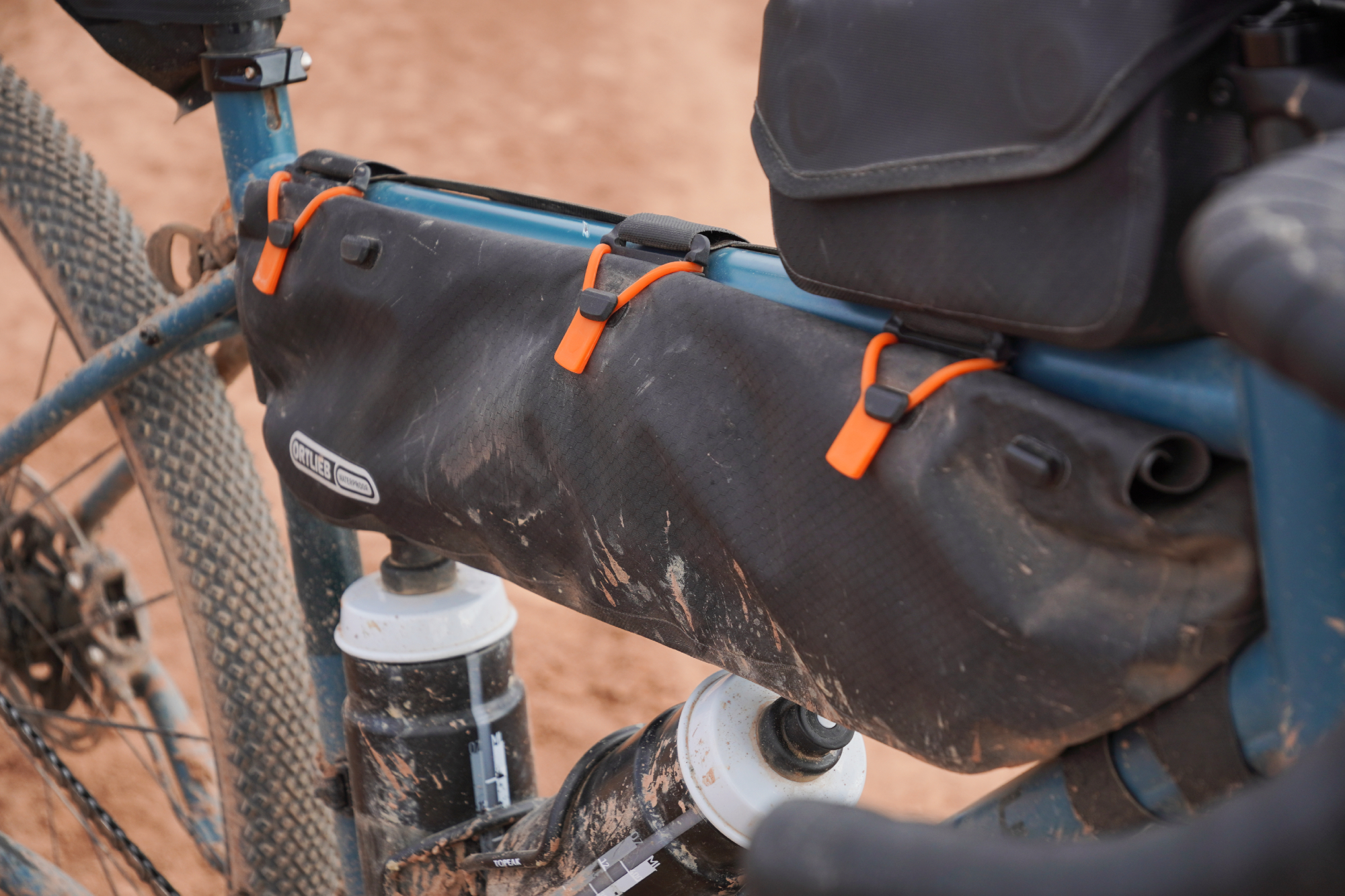
This is where I was stashing my tools, spares and other odds and ends - essentially everything which was hard, awkwardly shaped and which didn’t fit in my top tube bag.
This was my first experience of a half-frame bag with a roll-top closure rather than a zip - and the differences between the two approaches were quite interesting. When it comes to waterproofing, zips are generally the weak point, so to that end the roll-top was quite reassuring (although it wasn’t particularly challenged by the weather).
The other key difference is that no zip also means there’s no chance of a zip breaking.
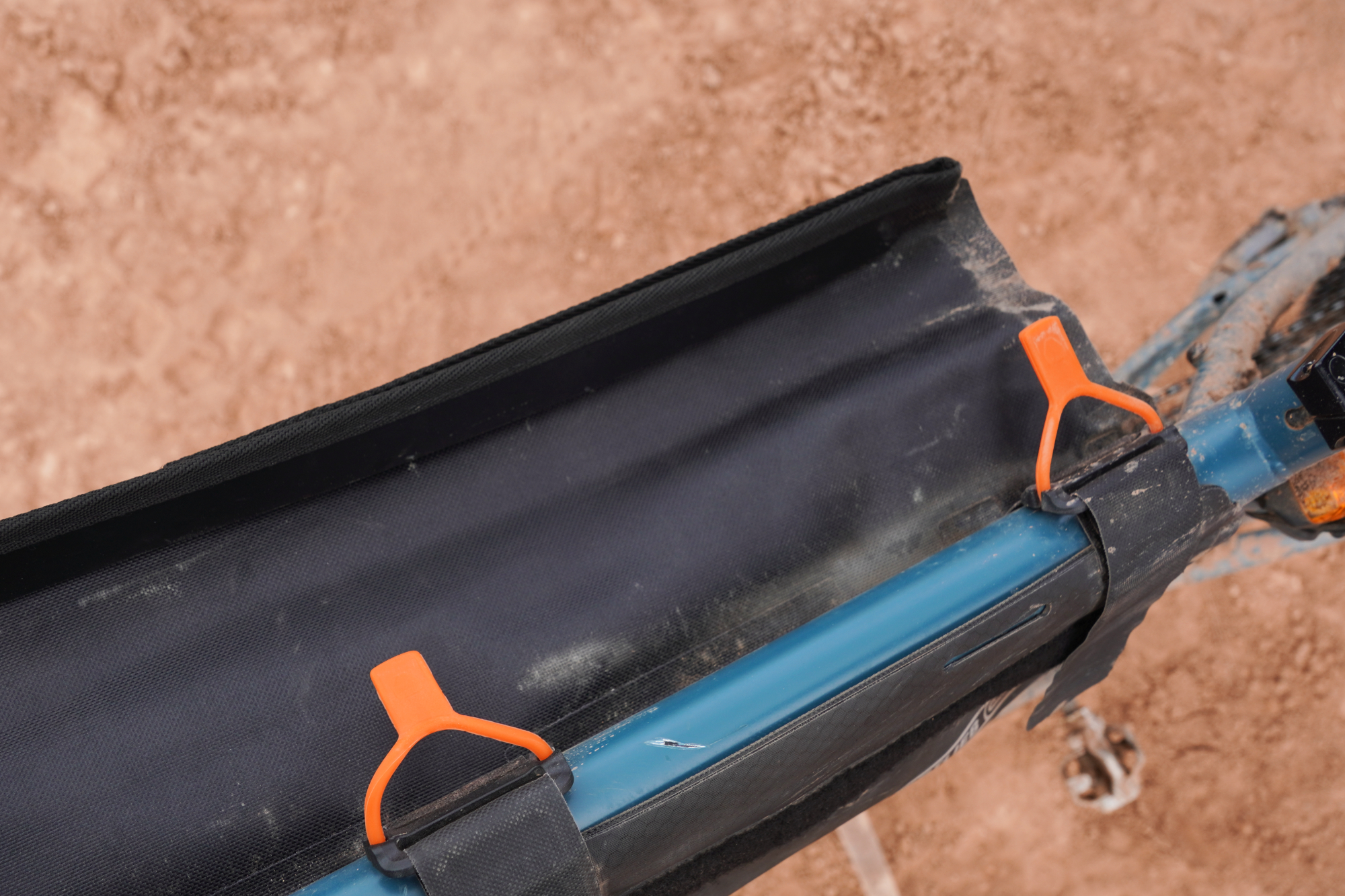
When it came to the riding, although some people might be able to unfurl the roll top enough to pull out some of their kit on the move, I didn’t find that I was able to. It didn’t present a problem though, as there was enough kit I didn’t really need access to on the move, and it was fine keeping all that in the Frame-Pack RC Toptube.
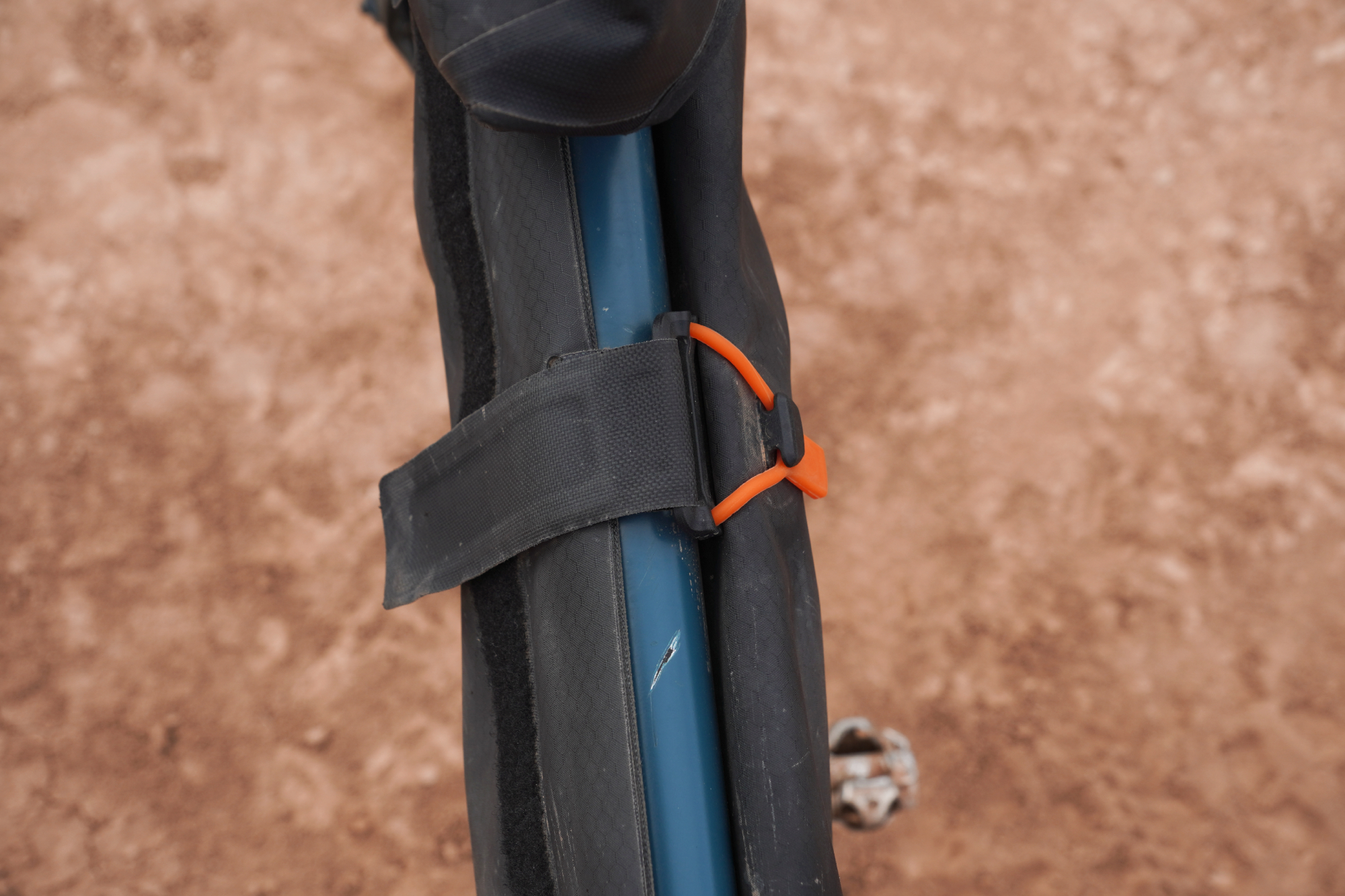
Helpfully, it is possible to change the locations of the straps which attach the bag to the top tube, helping it play nicely with any top tube bag or other frame features you might have. In terms of the width, I found it quite easy to keep from bulging and it stayed pretty slim-line and didn’t cause me any issues with knee rub when riding - although your experience might be different depending on how you pack it.
Ortlieb Fuel Pack
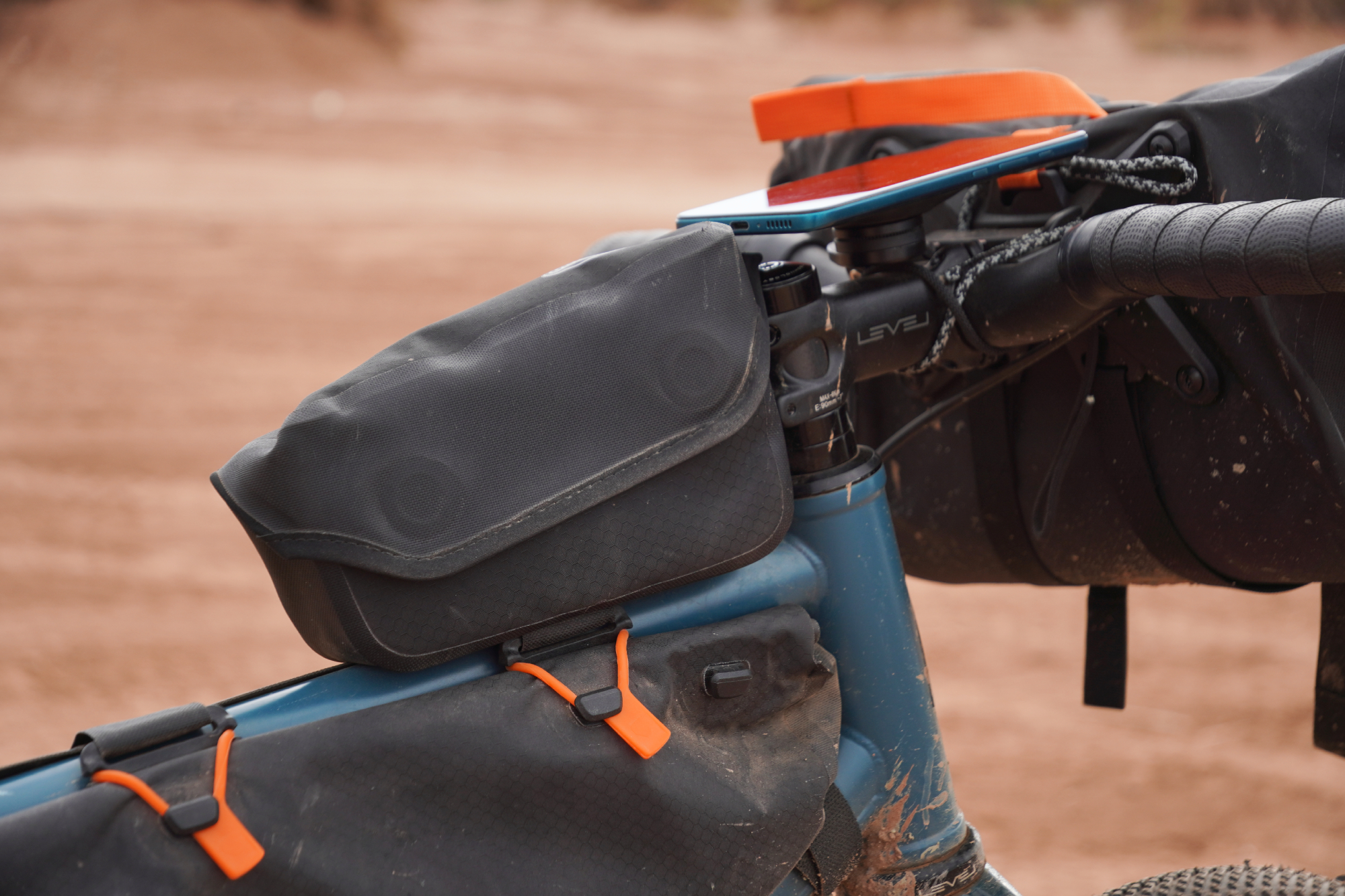
Like the Frame-Pack RC Toptube, Ortlieb’s Fuel Pack came with another interesting design choice as a result of eschewing a zippered closure. Rather than a roll top, though, it was a lid with magnetic retention.
Now, it’s not as if magnets are exactly at the cutting edge of technology (there’s evidence of their use spanning 2,500 years), but even so, pretty much every time they get integrated into a product I absolutely love it - from helmet straps to jackets.
The Fuel Pack is no exception, snapping the lid back in place was consistently satisfying. It is worth pointing out, though, that sometimes it could get a wrinkle and needed an extra little tug to get the lid to sit properly in place.
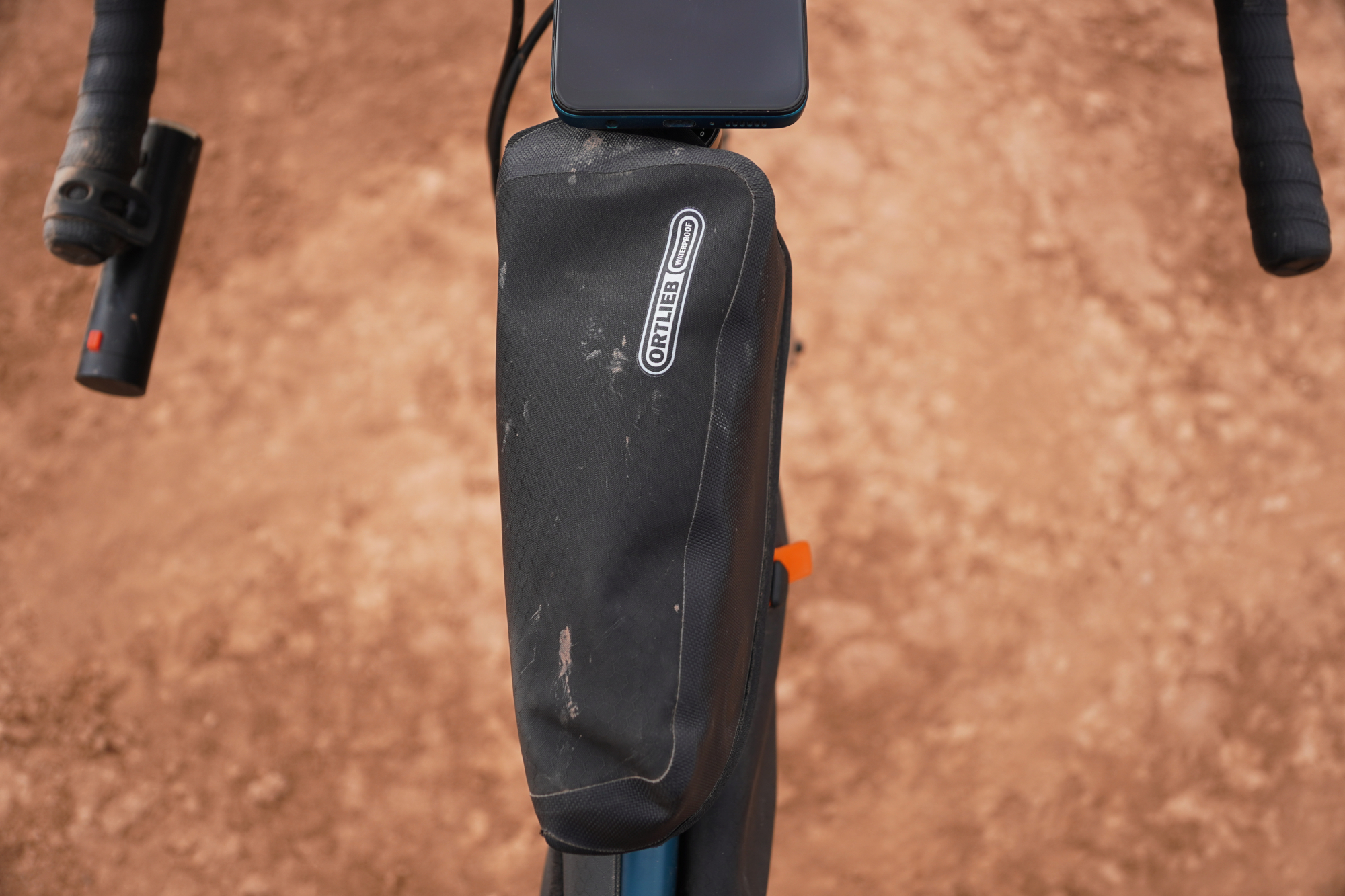
Ortlieb supplies a set of straps for attaching the Fuel Pack to top tubes which don’t feature an extra pair of bosses, but as the Ribble 725 Gravel Pro comes with a pair of these, I used those straps for lowering the position of the bottle cage on my seat tube so the bottle would fit better with the frame bag.
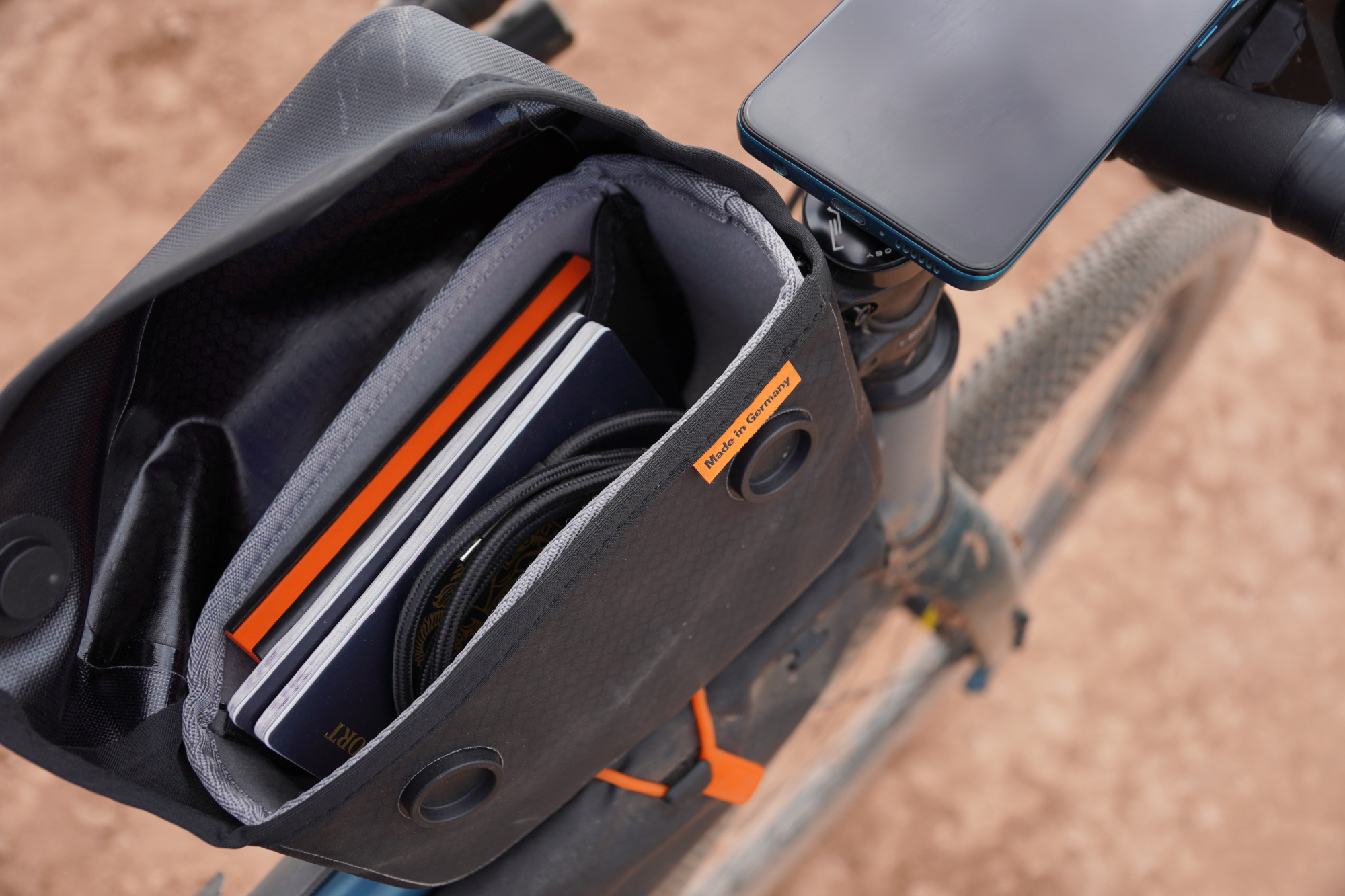
In terms of what I was carrying, the permanent items were a charger pack, cable and passports. I’d cycle in other odds and ends at various points throughout the ride, generally this was moving food from the handlebar bag to the Fuel Pack for quicker access, but at other times it was arm warmers, gloves, wallet, etc.
These were all the bags I was using and the kit I filled them with, if you’d like to read more about the bikepacking loop I went on around Morocco, the full write up is just over here. For the bikes of the Atlas Mountain Race, that's just over here.
The latest race content, interviews, features, reviews and expert buying guides, direct to your inbox!
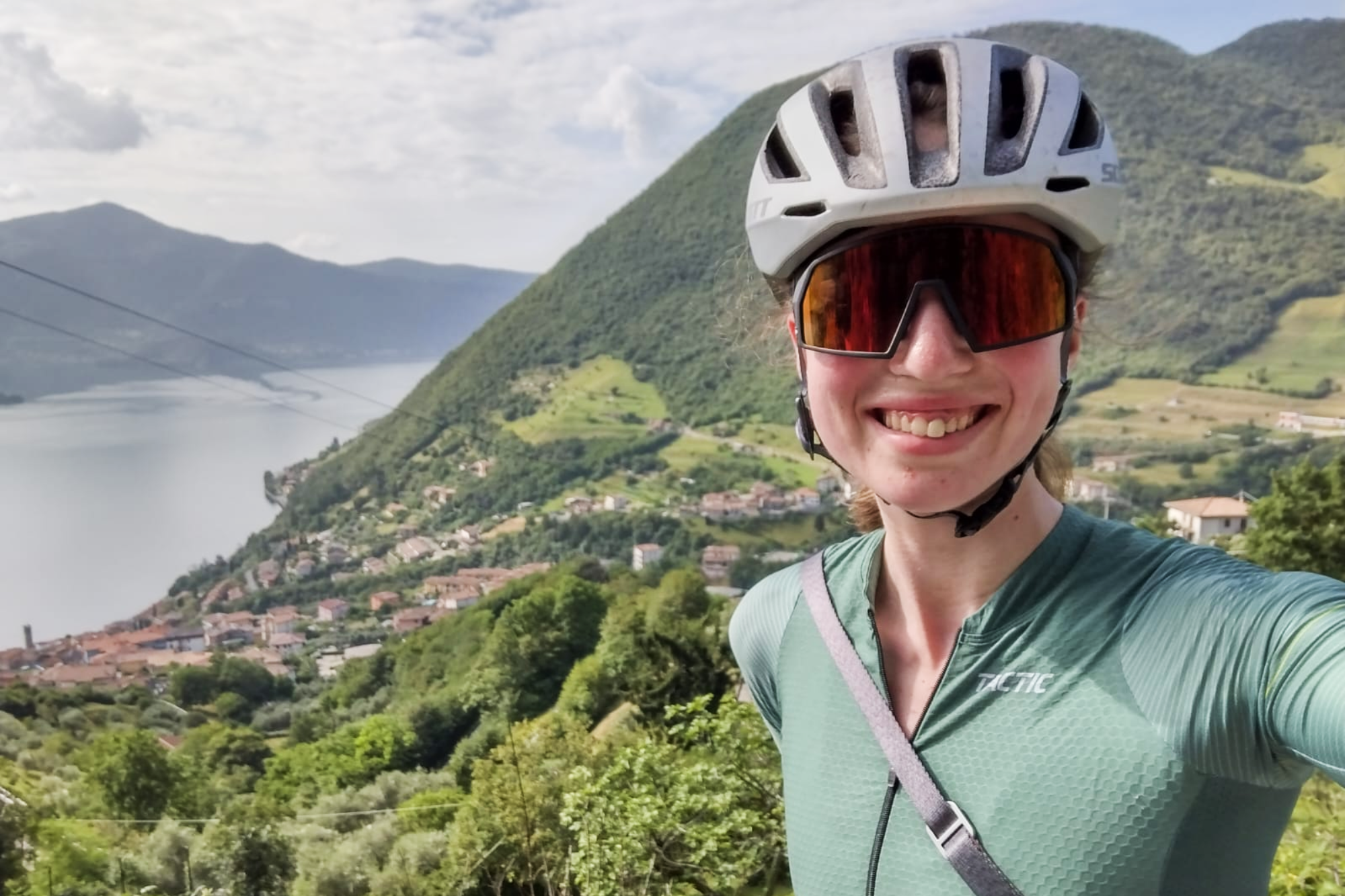
I’ve been hooked on bikes ever since the age of 12 and my first lap of the Hillingdon Cycle Circuit in the bright yellow kit of the Hillingdon Slipstreamers. For a time, my cycling life centred around racing road and track.
But that’s since broadened to include multiday two-wheeled, one-sleeping-bag adventures over whatever terrain I happen to meet - with a two-week bikepacking trip from Budapest into the mountains of Slovakia being just the latest.
I still enjoy lining up on a start line, though, racing the British Gravel Championships and finding myself on the podium at the enduro-style gravel event, Gritfest in 2022.
Height: 177cm
Weight: 60–63kg
-
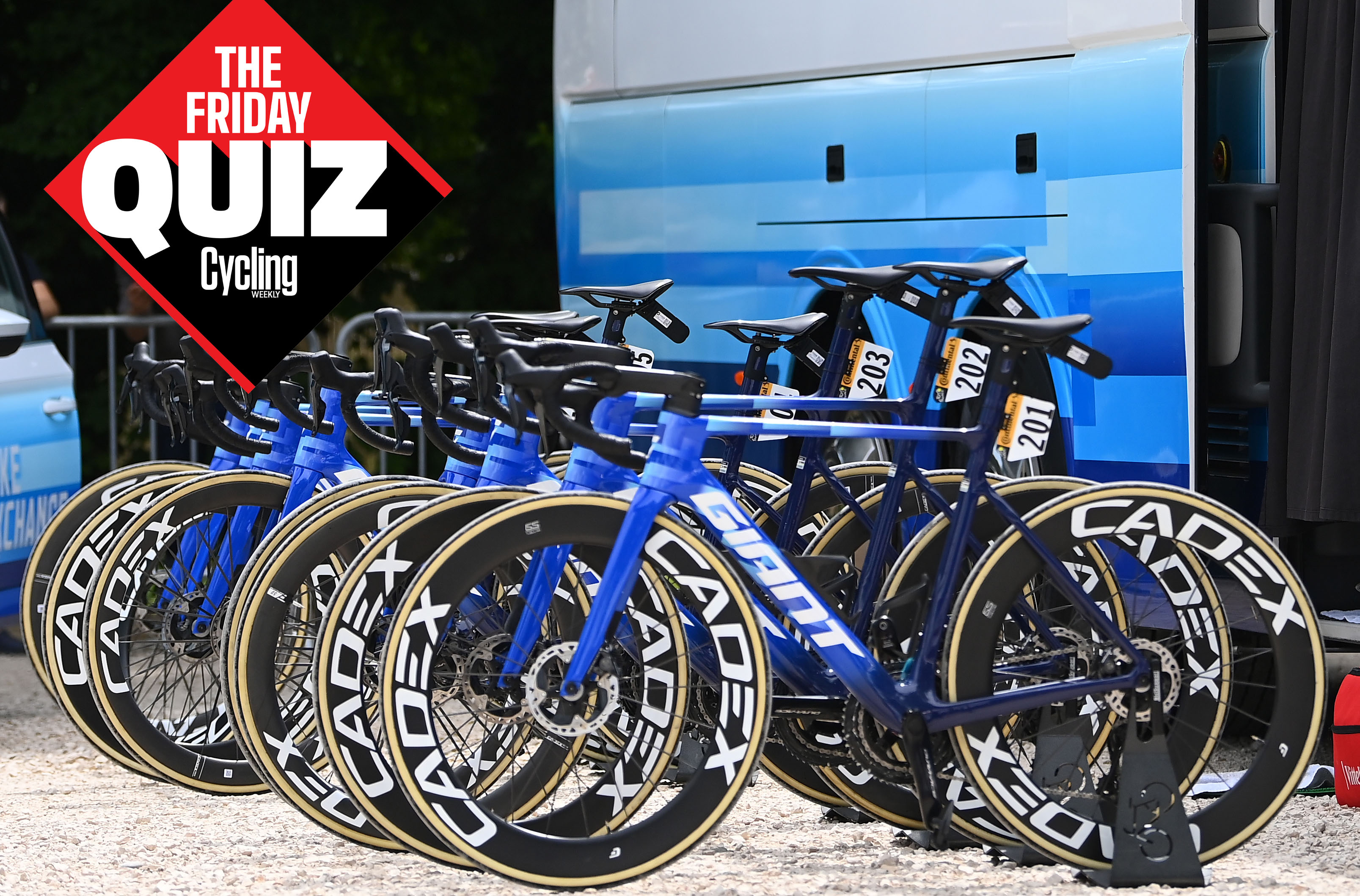 The Friday cycling quiz: How well do you know Giant bikes?
The Friday cycling quiz: How well do you know Giant bikes?Test your knowledge of one of the biggest companies in cycling with our Friday quiz
-
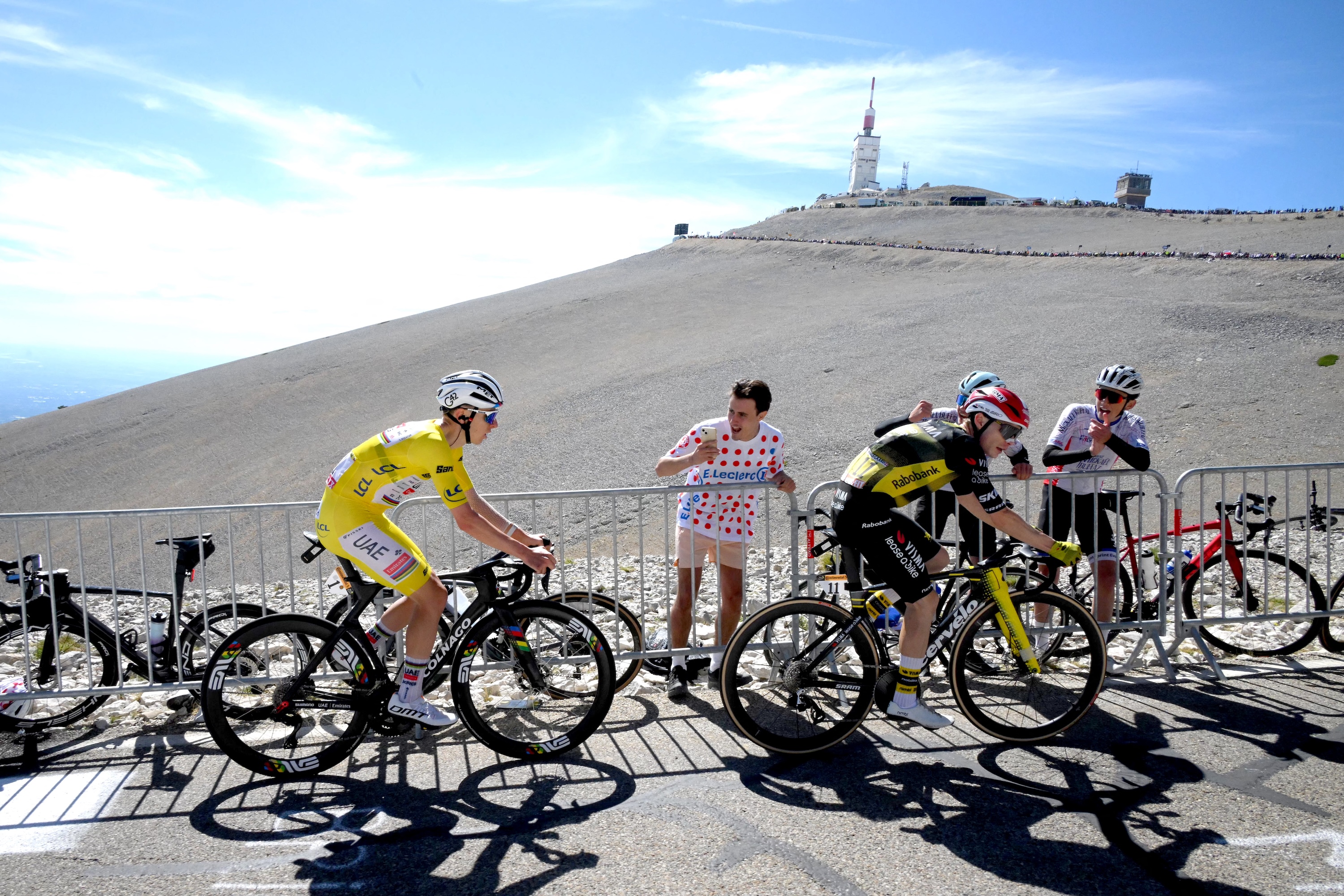 Colnago Y1Rs Tadej Pogačar rode at Tour de France and won World Championships on sells for $190,500, more than 10 times its value new
Colnago Y1Rs Tadej Pogačar rode at Tour de France and won World Championships on sells for $190,500, more than 10 times its value newHe didn't stop there on the Colnago, either, winning the World Championships and the Europeans too, oh and Il Lombardia
